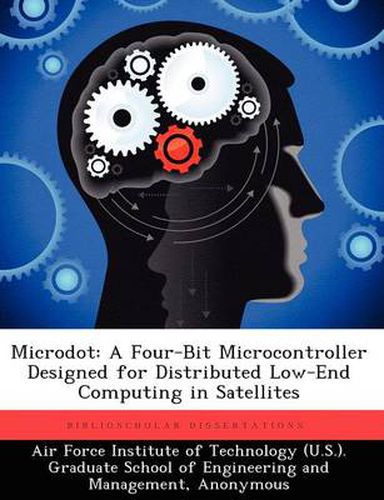Readings Newsletter
Become a Readings Member to make your shopping experience even easier.
Sign in or sign up for free!
You’re not far away from qualifying for FREE standard shipping within Australia
You’ve qualified for FREE standard shipping within Australia
The cart is loading…






This title is printed to order. This book may have been self-published. If so, we cannot guarantee the quality of the content. In the main most books will have gone through the editing process however some may not. We therefore suggest that you be aware of this before ordering this book. If in doubt check either the author or publisher’s details as we are unable to accept any returns unless they are faulty. Please contact us if you have any questions.
As satellites become more complex, the on-board processing capabilities must keep up. Many satellites are an integrated collection of sensors and actuators with many requiring dedicated real-time control to operate correctly. For single processor systems, adding more sensors requires an increase in computing power and speed to provide the multi-tasking capability needed to service each sensor. Faster processors are more costly and consume more power, which can tax a satellite’s power resources and may lead to shorter satellite lifetimes. Commercial-Off-The-Shelf (COTS) electronic components are usually not acceptable for satellite design because they have not been hardened against the radiation environment of space. An alternative design approach is to use a distributed network of small and low power microcontrollers designed for space to handle the computing requirements of each individual sensor and actuator. The design of microdot, a four-bit microcontroller for distributed low-end computing, is presented. The design is based on previous research completed at the Space Electronics Branch, Air Force Research Laboratory (AFRL/VSSE) at Kirtland AFB, NM, and the Air Force Institute of Technology at Wright- Patterson AFB, OH. The Microdot has 29 instructions and a 1K x 4 instruction memory. The distributed computing architecture is based on the Philips Semiconductor I2C Serial Bus Protocol. A prototype was implemented and tested using an Altera Field Programmable Gate Array (FPGA). The prototype was operable up to 9.1 MHz. The design was also targeted for fabrication using a radiation-hardened-by-design gate-array library from Mission Research Corporation. The gate-array library is designed for the TSMC 0.35 micrometer CMOS process.
$9.00 standard shipping within Australia
FREE standard shipping within Australia for orders over $100.00
Express & International shipping calculated at checkout
This title is printed to order. This book may have been self-published. If so, we cannot guarantee the quality of the content. In the main most books will have gone through the editing process however some may not. We therefore suggest that you be aware of this before ordering this book. If in doubt check either the author or publisher’s details as we are unable to accept any returns unless they are faulty. Please contact us if you have any questions.
As satellites become more complex, the on-board processing capabilities must keep up. Many satellites are an integrated collection of sensors and actuators with many requiring dedicated real-time control to operate correctly. For single processor systems, adding more sensors requires an increase in computing power and speed to provide the multi-tasking capability needed to service each sensor. Faster processors are more costly and consume more power, which can tax a satellite’s power resources and may lead to shorter satellite lifetimes. Commercial-Off-The-Shelf (COTS) electronic components are usually not acceptable for satellite design because they have not been hardened against the radiation environment of space. An alternative design approach is to use a distributed network of small and low power microcontrollers designed for space to handle the computing requirements of each individual sensor and actuator. The design of microdot, a four-bit microcontroller for distributed low-end computing, is presented. The design is based on previous research completed at the Space Electronics Branch, Air Force Research Laboratory (AFRL/VSSE) at Kirtland AFB, NM, and the Air Force Institute of Technology at Wright- Patterson AFB, OH. The Microdot has 29 instructions and a 1K x 4 instruction memory. The distributed computing architecture is based on the Philips Semiconductor I2C Serial Bus Protocol. A prototype was implemented and tested using an Altera Field Programmable Gate Array (FPGA). The prototype was operable up to 9.1 MHz. The design was also targeted for fabrication using a radiation-hardened-by-design gate-array library from Mission Research Corporation. The gate-array library is designed for the TSMC 0.35 micrometer CMOS process.